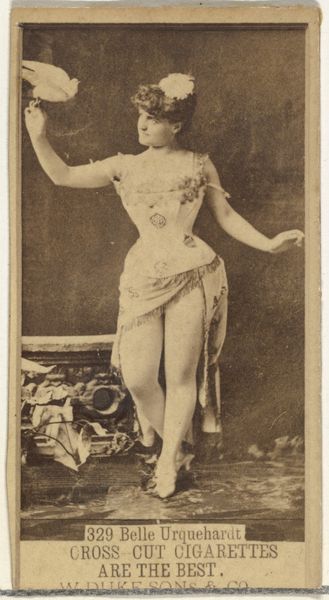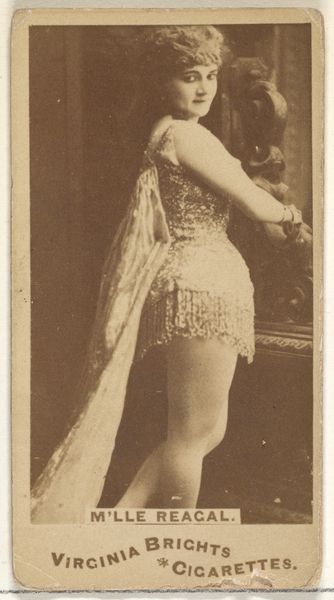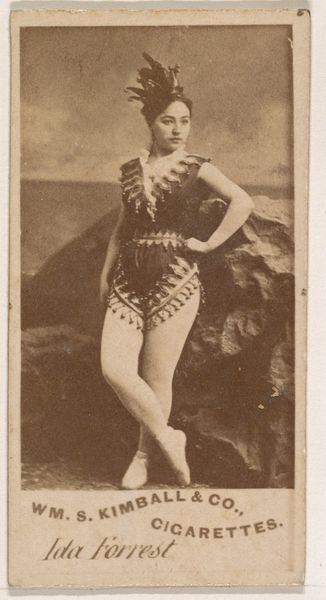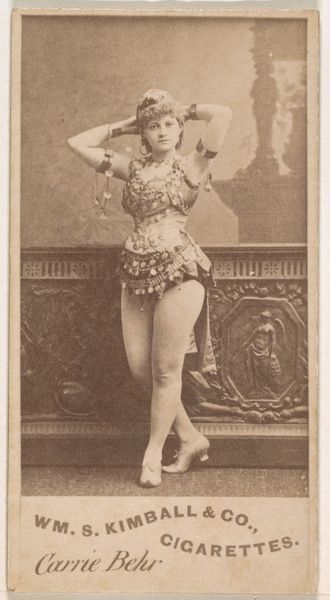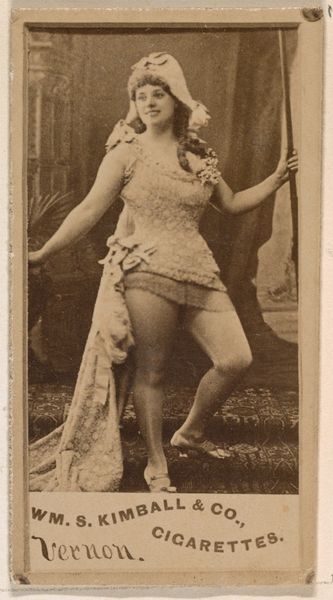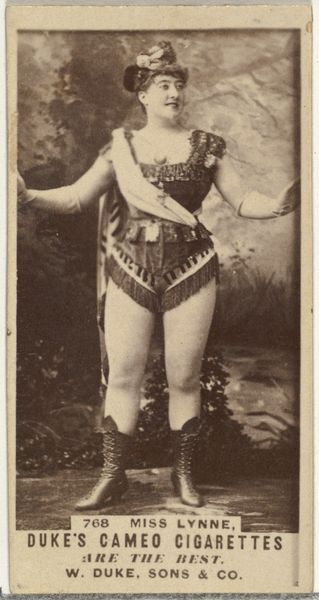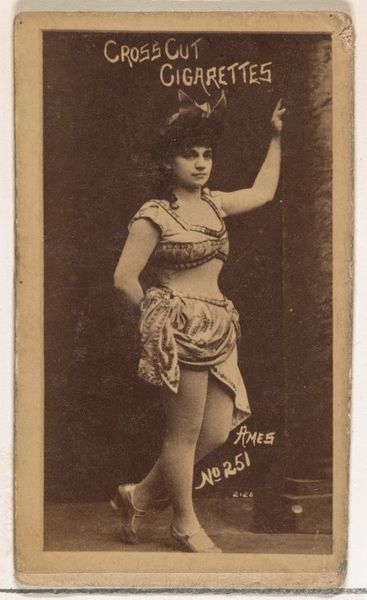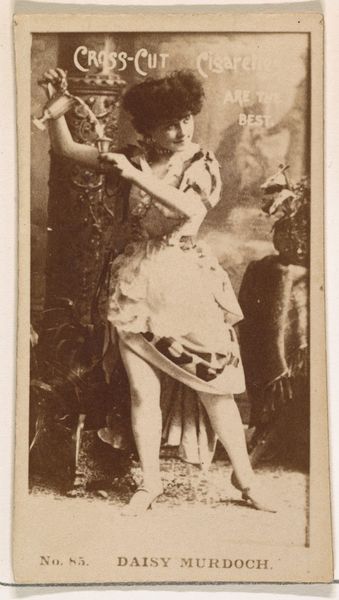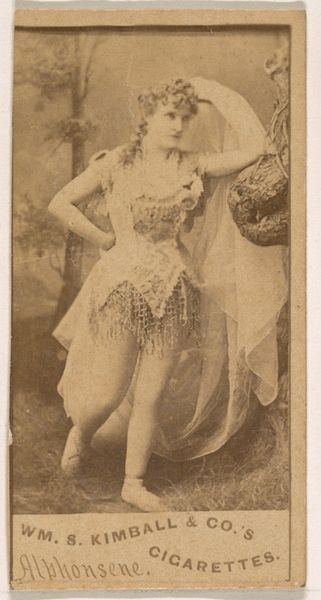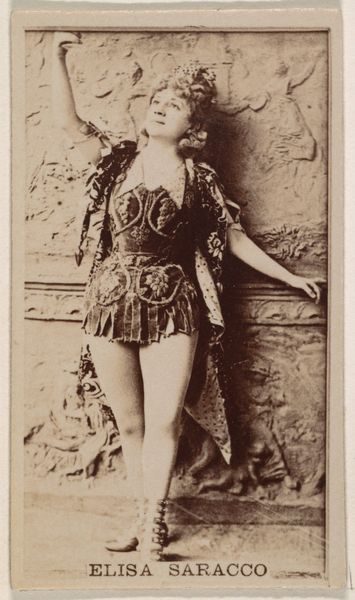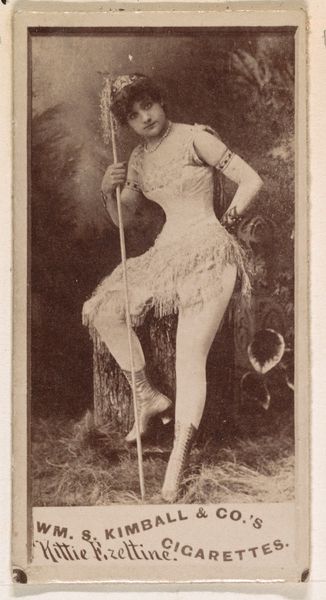
Miss Urquhart, from the Actresses series (N203) issued by Wm. S. Kimball & Co. 1889
0:00
0:00
drawing, print, c-print, photography
#
portrait
#
drawing
# print
#
c-print
#
charcoal drawing
#
photography
#
erotic-art
Dimensions: Sheet: 2 5/8 × 1 3/8 in. (6.6 × 3.5 cm)
Copyright: Public Domain
Editor: Here we have "Miss Urquhart, from the Actresses series (N203) issued by Wm. S. Kimball & Co.", dating back to 1889. It seems to be a print, originally made for a cigarette card. The woman's pose is striking, almost defiant, but also theatrical. What do you see when you look at this piece? Curator: This image offers us a glimpse into the commodification of the female performer in the late 19th century. It's interesting to consider it as part of a larger system where women’s images were used to sell products, shaping and reinforcing gender roles. The hyper-sexualization of her image – consider her corset, exposed legs, and theatrical stance – speaks volumes about the male gaze and its influence on the representation of women. Editor: So, the image wasn’t just about entertainment, but also about power dynamics? Curator: Precisely. The "Actresses series" reduces these women to objects of consumption. I’m also drawn to the flower in her hair, held so gently. It poses questions about the complex relationship between performance, identity, and the very real social constraints these women navigated. Editor: It's almost as if the flower contrasts the blatant sexualization. Was it an act of defiance or reclaimation? Curator: Or perhaps both? By examining images like this through a feminist lens, we can unpack the intricate web of social expectations and power relations that shaped women's lives then and, in some ways, continue to do so today. What do you take away from this? Editor: It definitely makes me rethink what I initially saw as simply an old portrait. It's powerful how a seemingly simple image can reveal so much about social history. Curator: Exactly. It highlights how art history isn't just about aesthetics; it’s about understanding the social, political, and economic forces at play.
Comments
No comments
Be the first to comment and join the conversation on the ultimate creative platform.
